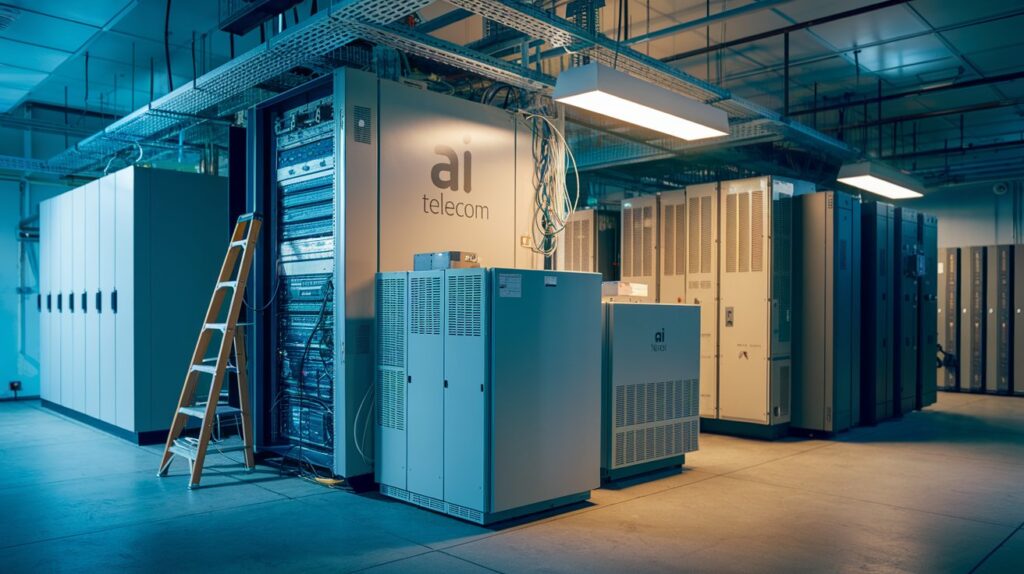The integration of artificial intelligence (AI) into telecom power systems is revolutionizing how energy is managed, distributed, and optimized within telecommunications infrastructure. With the increasing demand for reliable connectivity, especially in the era of 5G and IoT, ensuring uninterrupted power supply for telecom networks has become more critical than ever. AI-powered telecom power systems bring advanced capabilities, including predictive maintenance, energy efficiency optimization, and real-time monitoring, to address these needs effectively.

The telecom power systems market is witnessing significant growth due to several key factors. Firstly, the increasing deployment of 5G networks, which require more efficient and reliable power systems, is driving the demand for telecom power systems. Secondly, there is a rising awareness of the carbon footprint associated with the telecom industry, leading to a shift towards more sustainable power systems. Additionally, the expanding telecom infrastructure, driven by the growing demand for connectivity and the rise of remote working, is fueling the need for reliable and efficient power solutions. Government initiatives and investments in telecom infrastructure are also contributing to the market growth. Furthermore, the adoption of smart devices, the growth of cloud computing, and the increasing demand for secure telecom networks are additional driving factors. These factors combined are expected to propel the telecom power systems industry in the coming years.
One of the key benefits of AI in telecom power systems is the ability to predict and prevent system failures. By analyzing vast amounts of data from sensors and connected devices, AI algorithms can identify potential issues, such as battery degradation or equipment overheating, before they escalate into critical failures. This proactive approach minimizes downtime and ensures consistent network performance, which is essential for both service providers and end-users.
AI also enhances energy efficiency by optimizing power usage based on real-time demand. Telecom networks often operate at varying loads, and AI can dynamically adjust power distribution to minimize energy wastage. This is particularly beneficial for reducing operational costs and meeting sustainability goals, as it aligns with the global push for greener technologies.
Moreover, AI-driven telecom power systems facilitate seamless integration with renewable energy sources like solar and wind. By intelligently balancing power inputs and storage, these systems ensure that renewable energy is utilized effectively without compromising reliability. This capability not only reduces the carbon footprint of telecom operations but also makes them more resilient to energy disruptions.
The adoption of AI in telecom power systems is expected to grow significantly as telecommunications networks expand to accommodate new technologies such as edge computing and 6G. These systems are poised to play a pivotal role in ensuring that telecom operators can scale their networks efficiently while maintaining cost-effectiveness and environmental responsibility.
In conclusion, AI-powered telecom power systems represent a transformative advancement in the telecommunications industry. By leveraging AI’s predictive and optimization capabilities, these systems provide a robust foundation for the future of global connectivity. As the technology continues to evolve, it will undoubtedly shape the way power is managed in telecom networks, setting new benchmarks for reliability, efficiency, and sustainability.

Additional Key Benefits of AI-Powered Telecom Power Systems
- Real-Time Fault Detection: AI enables instant identification and localization of faults in the power system, allowing for faster resolution and reducing service interruptions.
- Dynamic Load Balancing: The systems can manage load distribution across different components, ensuring optimal performance during peak and off-peak hours.
- Remote Monitoring and Management: With AI integration, operators can monitor power systems remotely, providing greater flexibility and reducing the need for on-site interventions.
- Energy Storage Optimization: AI algorithms improve the performance and lifespan of batteries by intelligently managing charge and discharge cycles.
- Scalability: AI-powered systems can adapt to the increasing energy demands of expanding telecom networks, particularly in densely populated urban areas.
- Cost Reduction: By optimizing energy consumption and minimizing system downtime, these solutions significantly lower operational costs.
- Enhanced Cybersecurity: AI improves the resilience of telecom power systems against cyber threats by identifying and mitigating vulnerabilities in real time.
- Integration with Smart Grids: These systems can seamlessly connect with smart grid technologies to enhance energy distribution and efficiency.
- Reduction in Maintenance Costs: Predictive analytics helps schedule maintenance activities only when needed, reducing unnecessary expenditures.
- Support for Emerging Technologies: AI-based systems are well-suited to handle the requirements of technologies such as 5G, IoT, and edge computing, making them future-proof.
